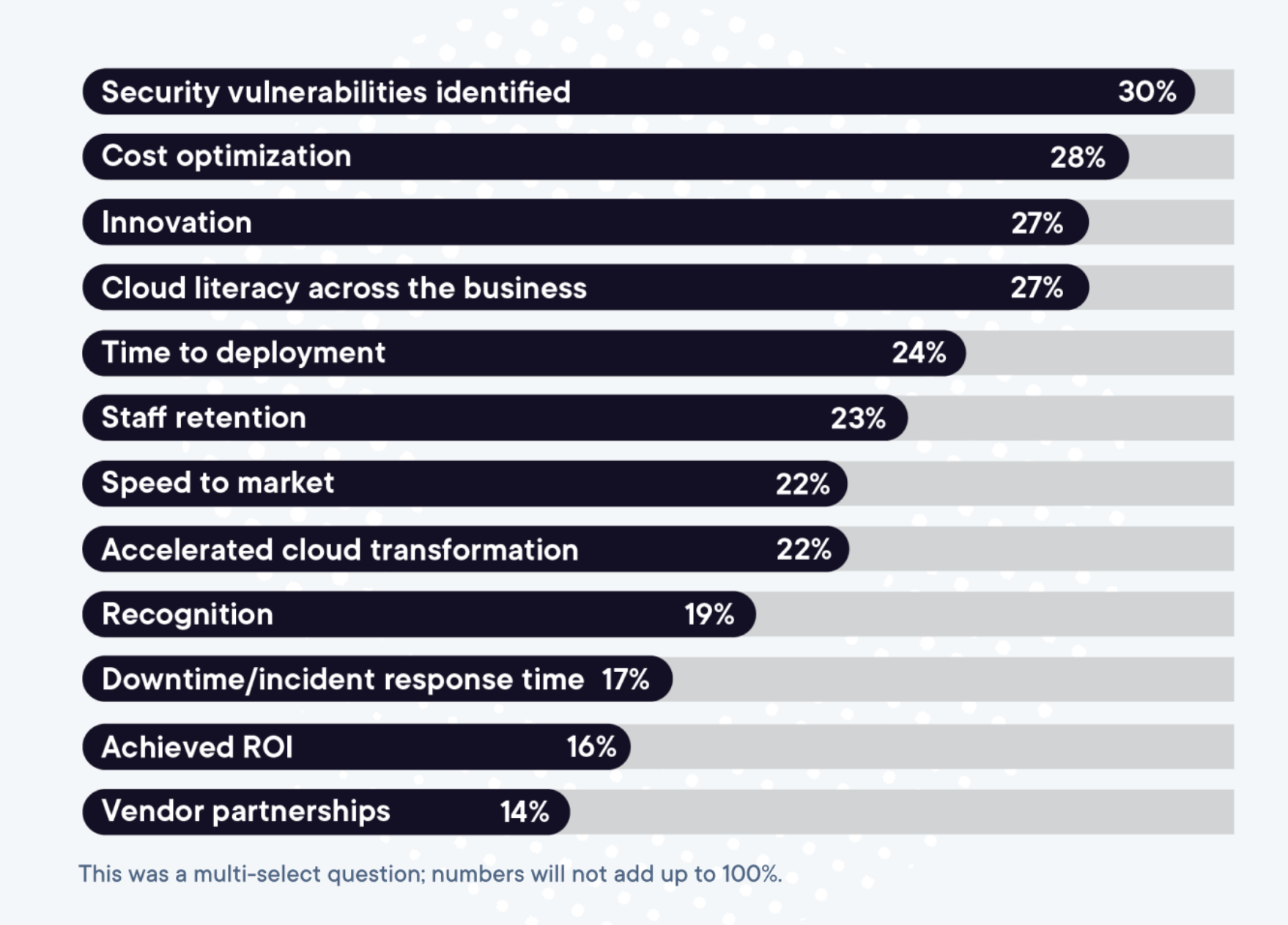For the past several years, most organizations have made it their priority to shift much of their applications and data from on-premises to the cloud. In fact, 57% of businesses will migrate their workloads to the cloud in 2022 and 70% of companies plan to increase their cloud budgets in the future, according to Techjury.
These cloud adoption stats are staggering. However, despite widespread cloud adoption, organizations are still struggling to ensure that their teams are fully cloud literate. Pluralsight’s 2022 State of Cloud report showed that while 75% of tech leaders say they’re building all new products and features in the cloud moving forward, only 8% of technologists have extensive cloud-related skills.
This stat alone shows that simply adopting cloud technologies is not enough to enable your organization to make the most out of its cloud investments. Businesses must begin searching for ways to move from cloud adoption to cloud maturity – a holistic approach that enables tech teams to become cloud experts while executing on organizational cloud goals. Here’s how to start the process.
Cloud Computing is the Present, not the Future, of Technology
There are a variety of reasons that cloud computing has been steadily gaining popularity over on-prem solutions. Some of the most obvious advantages of the cloud are flexibility, scalability, and improved speed to market. The State of Cloud report showed that 75% of organizations are now defaulting to cloud over on-prem.

Investing in cloud computing can also save an organization manpower by decoupling the cloud software – computing, storage, and network resources – from hardware. This means that technologists are not spending time managing hardware like they would with a more traditional infrastructure.
Though most organizations have adopted cloud in some way, very few organizations are actually optimizing their cloud spend, according to TechTarget. In fact, more than a third of businesses have cloud budget overruns of up to 40%. While many factors contribute to cloud overspend, I believe that one of the key drivers is a lack of cloud maturity. For some organizations, simply implementing a cloud solution into the business structure may seem sufficient. To achieve true cloud transformation, though, tech leaders need to optimize cloud fluency across all levels of the organization.
As I’ve alluded to several times already, a focus on cloud maturity is crucial for organizations who have adopted cloud technologies, but have not yet optimized them. Cloud maturity refers to the extent to which cloud governance and development is optimized within an organization, allowing for scalability and alignment with business objectives. Cloud maturity can be categorized in five different levels:
The State of Cloud report showed that less than half of organizations rated themselves as having a high level of cloud maturity, falling within levels 4 and 5 on the above scale.
Now that we have an understanding of what cloud maturity is, how does an organization go-about increasing their cloud maturity? According to our research, the top ways that organizations are increasing their cloud maturity is through designing cloud strategies for speed and business value, optimizing for cloud native with containers and serverless, and enabling hybrid architectures with distributed cloud.
Despite the fact that so few technologists feel well-versed in cloud technologies, internal upskilling ranked relatively low on the list of actions taken towards cloud maturity in the study. Only 37% of organizations use upskilling internal employees in private and public cloud as a key tactic to drive organizational cloud maturity.
This misalignment between organizational cloud maturity and tech worker cloud skill levels is especially concerning because human error continues to dominate as the leading cause of cloud security failures, a key concern for most organizations who are becoming more cloud fluent.
Savvy cloud leaders must understand that the complexity of the cloud requires a multi-pronged plan. This involves designing and optimizing cloud strategies, growing cloud skills internally, and enabling hybrid architectures connected to distributed cloud technologies.
Cloud maturity is not something an organization gains over night. Rather, cloud maturity must involve a strategic effort from all levels of the businesses to optimize cloud spend, mitigate cloud-related risks, and upskill workers in cloud technologies.
Organizations who achieve a high level of cloud maturity have much to gain over organizations that stop at cloud adoption. According to McKinsey, there are more than 1 trillion dollars in potential earnings in the cloud up for grabs across Fortune 500 companies by 2030. Cloud maturity directly contributes to an organization’s bottom line.
A great example of an organization that has worked to achieve cloud maturity is Deutsche Bank, the leading bank in Germany. Deutsche Bank recognized that in order to keep up with the future of banking, it needed to become a cloud-mature organization. To do this, the organization invested first in their technologists, providing them with the resources and training they needed to become cloud fluent and build new solutions in the cloud from the ground up. This focus on upskilling technologists in the cloud resulted in Deutsche Bank creating a pipeline of cloud talent from within, allowing them to bring innovative solutions to market.
When taken seriously, cloud maturity becomes a distinct competitive advantage for organizations. It strengthens business infrastructure at scale, allowing organizations to shift focus away from hardware management and towards creating the best products for their customers. However, when cloud maturity is deprioritized or neglected, security issues, budget inefficiencies, and under-skilled tech workers abound.
The potential rewards for getting cloud strategy right are too high for leaders to ignore. It’s not enough to simply migrate existing features or data into the cloud – tech leaders must reshape their business practices to get the most out of their cloud investment.
By Drew Firment, Vice President of Enterprise Strategies at Pluralsight





